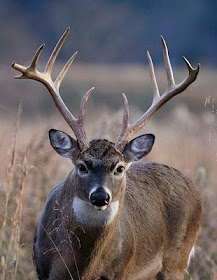 Bull 36 -2005
Bull 36 -2005
There is a belief among some that support the Pennsylvania Elk hunt as it is currently implemented, that their opponents are misinformed, uneducated persons, who have little understanding of the situation. If if they could only grasp the "scientific" facts of modern wildlife management they would become enthusiastic supporters of the program instead of shouting "half-truths" from the rooftops.
First, I must confess that I did agree with this point of view to a certain extent in my early years, with the exception that elk did not enter into the equation when I entered the outdoor arena in the mid-1960s as there was only a small remnant of a herd and little or no discussion of Pennsylvania elk in any of the outdoor magazines. How then did one who was educated, enlightened and totally with the program come to develop a diametrically opposite point of view after spending the majority of their life working in the front ranks of land management and law-enforcement with the Pennsylvania Game Commission? It would take an entire book to deal with this issue in a satisfactory manner, but I hope to address it to a certain extent in a series of posts in the near future.
With this thought in mind I wish to toss out a few thoughts on who pays for our wildlife conservation programs and on elk management in particular.
Read More:









